Galaxies
Look up into the heavens. Who created all the stars? He brings them out like an army, one after another, calling each by its name. Because of his great power and incomparable strength, not a single one is missing. … Have you never heard? Have you never understood? The LORD is the everlasting God, the Creator of all the earth. He never grows weak or weary. No one can measure the depths of his understanding. He gives power to the weak and strength to the powerless. (Isaiah 40:26-29, NLT)
Most stars in the universe are arranged in galaxies—immense clusters of millions or billions of stars. Our galaxy, the Milky Way, is at least 100,000 light-years in diameter, and contains an estimated 200 - 400 billion stars.According to some recent estimates, it may be significantly larger than that. The sun is among these, located roughly 30,000 light-years from the center of the galaxy, as shown in the diagram below.
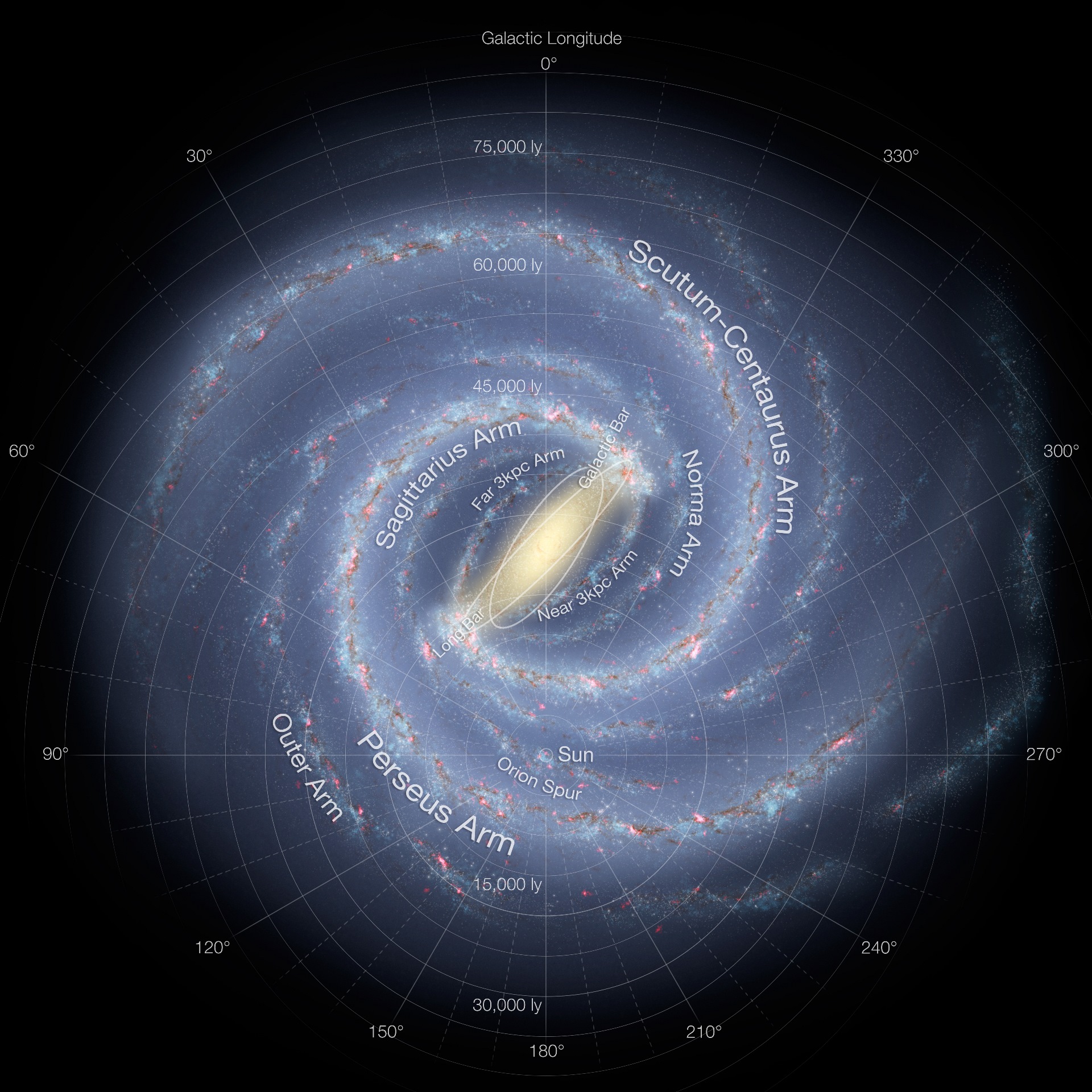
In this artist’s rendition of the Milky Way, each tiny speck of light represents thousands or millions of stars. Individual stars are not visible in this image, but the location of the sun is indicated. Click here for a high-resolution, zoomable version.
All stars visible to the unaided eye are members of the Milky Way Galaxy. Although a few other galaxies are visible, they are too far away for us to distinguish the individual stars within them. Without a telescope, other galaxies just look like fuzzy stars. In fact, most of the stars in our own Milky Way are so distant that they all blur together in a milky-white band across the night sky. Unaided human vision can only distinguish individual stars up to a few thousand light-years away, at best—a small fraction of the distance across our own galaxy.
Numerous dwarf galaxies—relatively “small” galaxies that contain no more than a few billion stars—orbit the Milky Way. Some of these are rather close to us; in fact, several are closer than the diameter of the Milky Way itself.See here for a list of the nearest galaxies. But the nearest major galaxy, Andromeda, is approximately 2.5 million light years away. (We can’t see what the Andromeda Galaxy looks like today. We only see what it looked like 2.5 million years ago, because its light has taken that long to reach us.) Andromeda is more than double the size of our Milky Way—so large that it can be seen with the unaided eye, even at that vast distance.
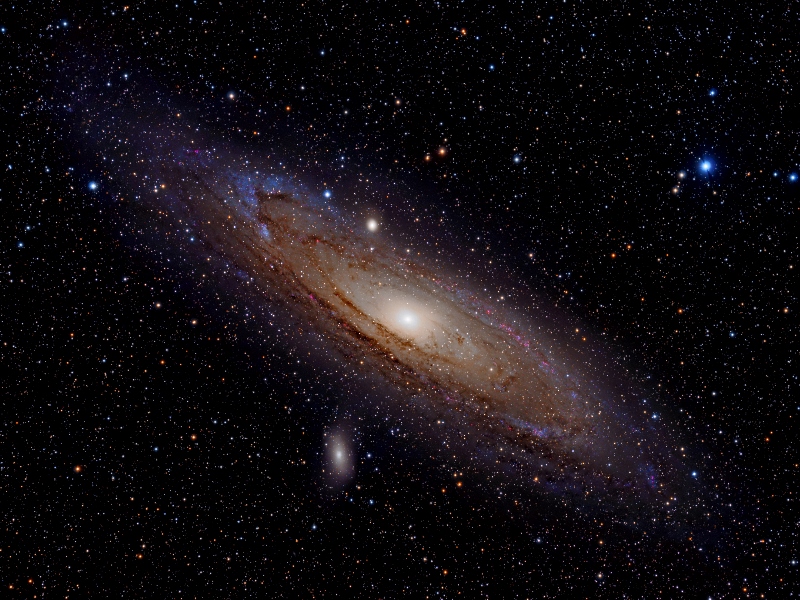
This photo of the Andromeda Galaxy was taken with an amateur telescope.The photographer states here that he took the photo using a Takahashi FSQ 85-EDX telescope. The fuzzy oval near the bottom of the photo is a dwarf galaxy (Messier 110) that orbits Andromeda. Another dwarf galaxy (Messier 32) appears as a smaller circle above Andromeda.
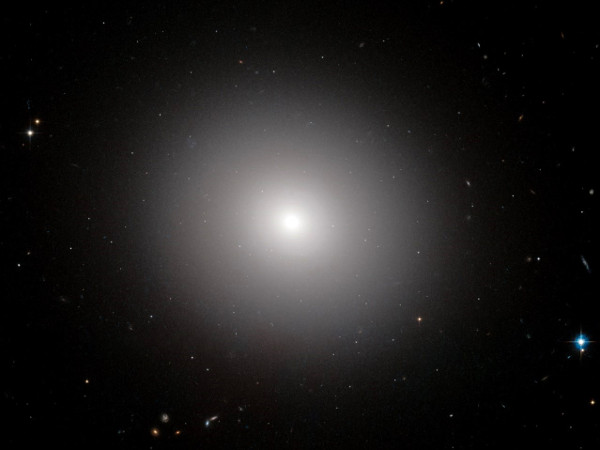
Galaxies are classified into four major categories: ellipticals, spirals, lenticulars, and irregulars. An elliptical galaxy is shaped like an ellipsoid (a three-dimensional ellipse), but from a distance it looks like a blurry circle of light, dimmer toward the edges and brighter in the middle. In an elliptical galaxy, stars orbit at random distances around the galaxy’s center of mass, and their approximately elliptical orbits are oriented in random directions. Although the stars all seem to blur together when viewed from a distance, in fact there are tremendous stretches of space between them, so the stars rarely collide even though they are orbiting randomly.
In a spiral galaxy, stars are arranged in a thin, disk-like structure, with “arms” of densely-clustered stars spiraling outward from a bulge at the center. The disk slowly rotates as stars orbit the center, and the spiral arms gradually change shape because stars near the center of the disk orbit slightly faster (just as planets near the sun orbit faster than those farther away). The Milky Way is a spiral galaxy, as is our nearest non-dwarf neighbor, Andromeda.
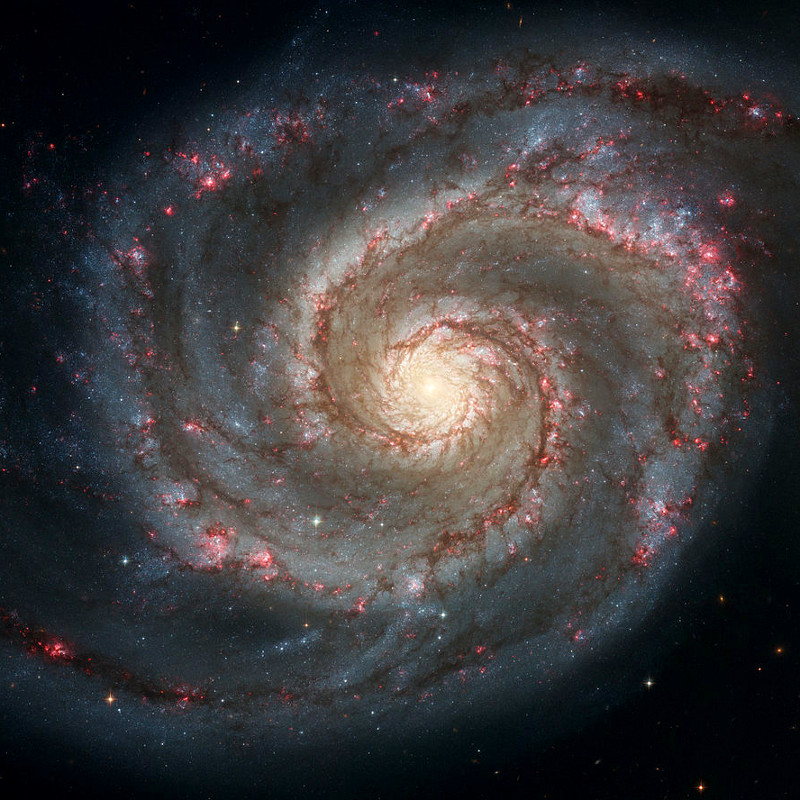
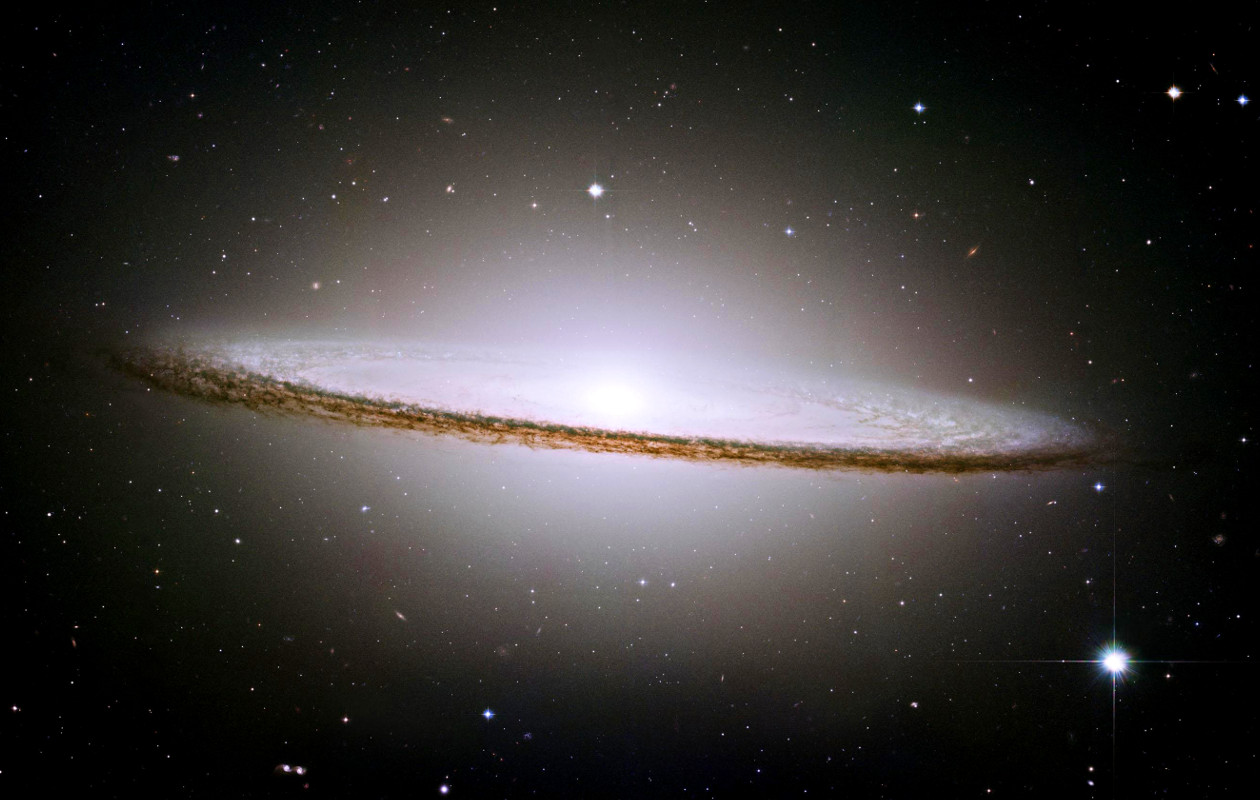
These photos taken by the Hubble Space Telescope show the spiral arms of the Whirlpool Galaxy (left) and the disk-like profile of the Sombrero Galaxy (right).
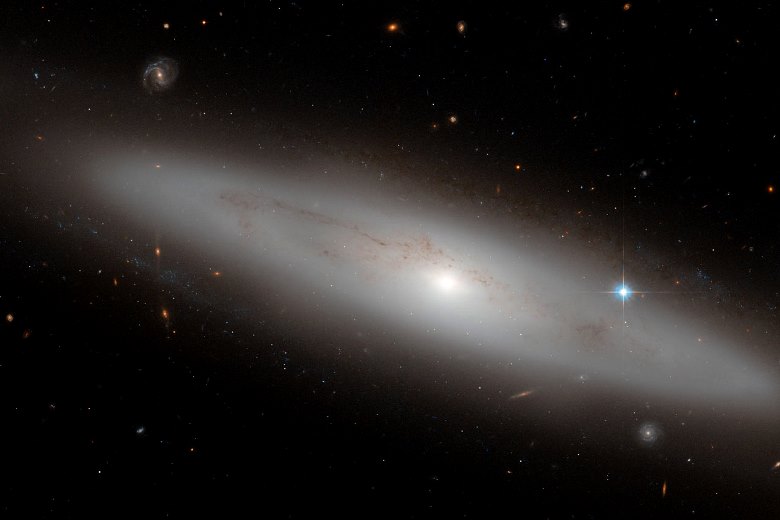
A lenticular galaxy is a blend of elliptical and spiral: it looks like a blurry spiral galaxy, with barely perceptible arms, but also resembles the fuzzy halo of an elliptical galaxy.
Any galaxy that doesn’t fit into one of the previous three categories is called an irregular galaxy.
Later in this chapter, I’ll explain the dominant theories concerning the formation of these different types of galaxies. First, let’s examine the large-scale structure of the universe.